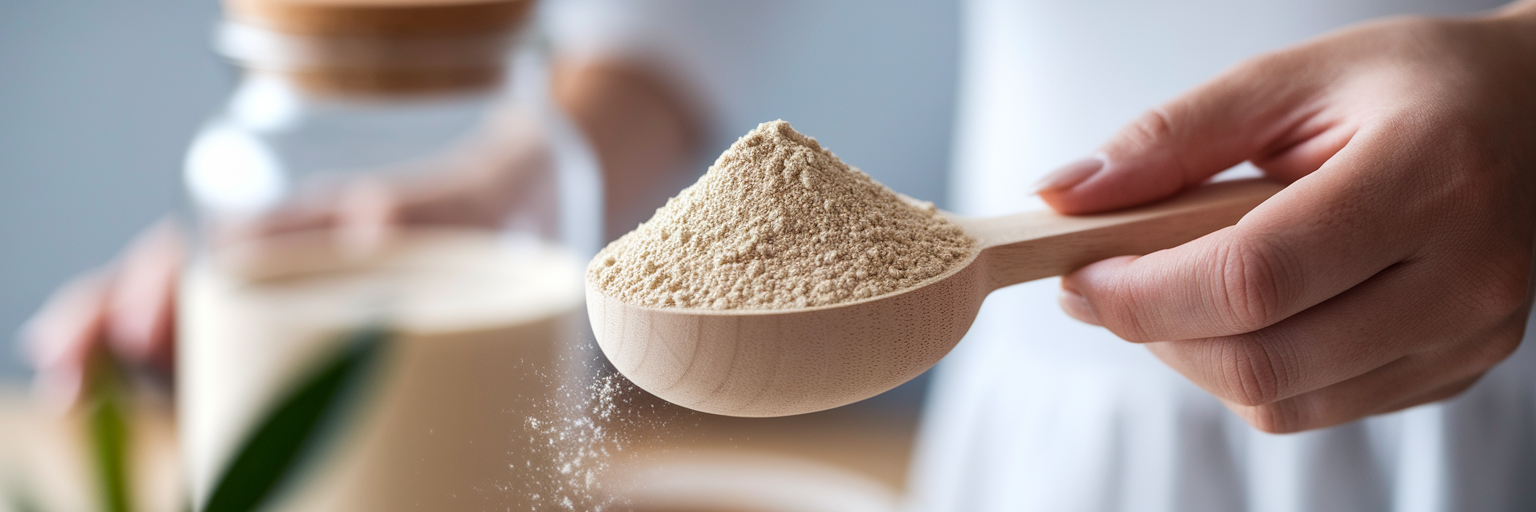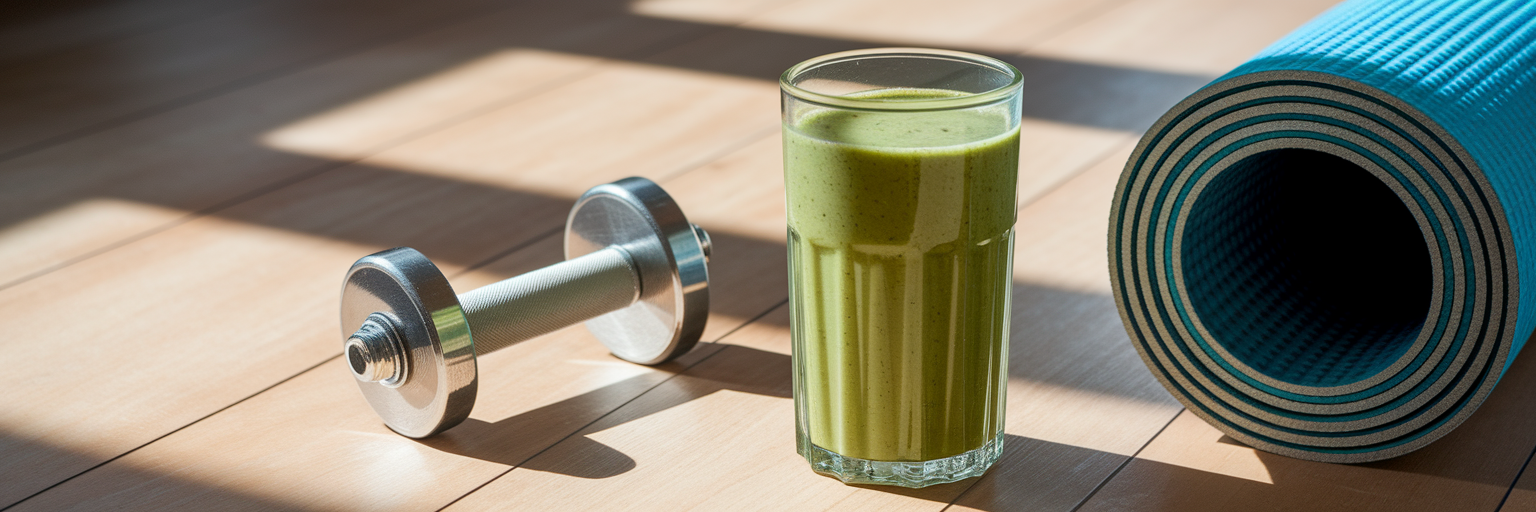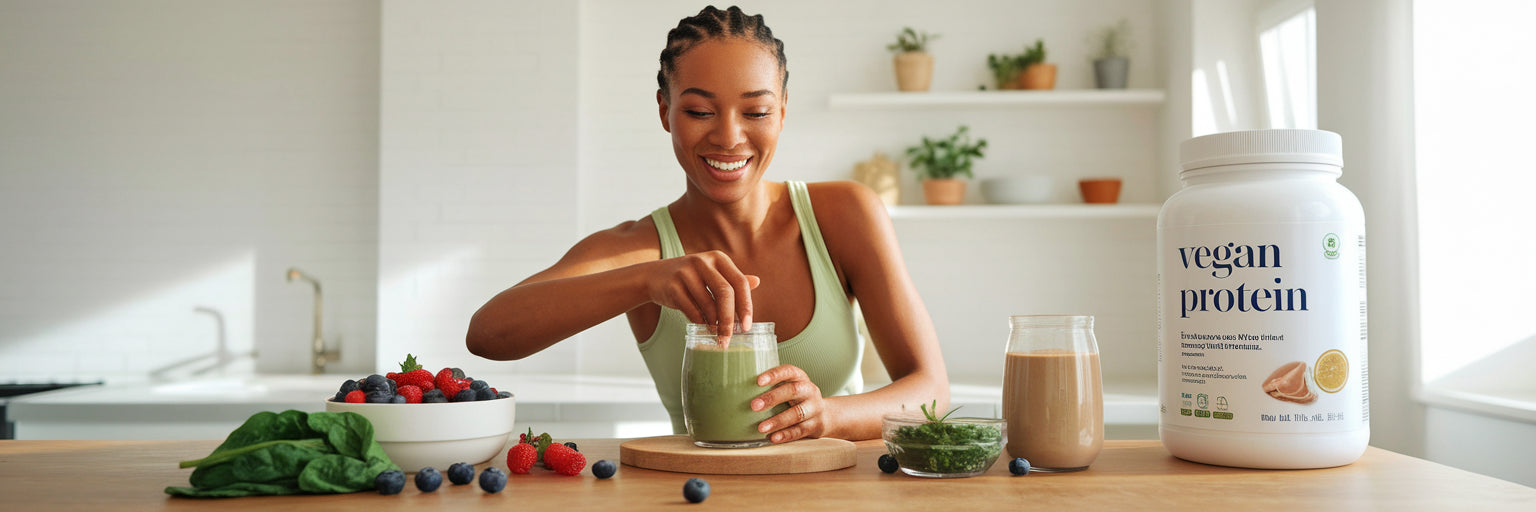More Than Just Muscle Fuel
Many women feel like they are constantly trying to sync their fitness goals with the natural rhythm of their hormonal cycles. It can feel like a push-and-pull between wanting to hit a new personal best and honoring the body’s need for rest and balance. This isn't a problem to be solved, but a dynamic to be understood. What if your nutrition could be a powerful ally in this process? A high-quality vegan protein powder for women can be much more than a simple post-workout recovery drink. Think of it as a foundational tool for holistic wellness.
Whether you're looking to manage PMS symptoms, navigate perimenopause with more ease, or simply find sustained energy for a busy life, the right plant-based protein can offer support. It provides the essential building blocks your body needs to function at its best, from building lean muscle to supporting a stable mood. This guide is our promise to you: a friendly, clear look at how plant proteins work, what to look for on a label, and how to seamlessly integrate them into your daily routine for both hormonal harmony and physical strength.
The Connection Between Plant Protein and Hormones

So, how exactly does a scoop of powder in your smoothie connect to your hormonal health? It starts with compounds found in plants called phytoestrogens. Soy is a great example, as it contains isoflavones that can gently interact with the body's estrogen receptors. This doesn't mean they take over; instead, they can help create a more stable hormonal environment. As noted by experts at Harvard Health Publishing, this gentle, balancing effect shows potential for managing symptoms like hot flashes. This makes soy protein for menopause a particularly interesting option for women in that life stage.
Beyond that, protein’s role extends to the very foundation of our body’s communication system. Proteins are made of amino acids, which are the essential building blocks for not just muscle, but also for neurotransmitters and hormones. Think of serotonin and dopamine, the chemicals that influence your mood and motivation. A complete intake of amino acids is crucial for metabolic health, which is a cornerstone of overall plant based protein hormonal balance. For instance, pea protein is rich in the amino acids that support an active lifestyle, helping your body repair and rebuild effectively after exercise. This synergy between muscle support and hormonal regulation is where plant proteins truly shine.
Top Plant Protein Ingredients for Women's Wellness
Walking down the supplement aisle can be overwhelming. Let's break down the unique superpower of each popular plant protein source so you know exactly what you're looking for.
Soy Protein: The Hormonal Harmonizer
Soy is one of the few plant-based sources that provides a complete amino acid profile, meaning it contains all nine essential amino acids your body can't produce on its own. Its isoflavone content makes it a go-to for women seeking hormonal support, particularly during perimenopause and menopause.
Pea Protein: The Fitness Fuel
If your goals are centered around fitness, pea protein is a fantastic choice. It is particularly rich in Branched-Chain Amino Acids (BCAAs), which are critical for muscle repair and growth. This makes it one of the best protein for women's fitness, helping you recover faster and build lean muscle effectively.
Hemp Protein: The Anti-Inflammatory Ally
Hemp offers more than just protein. It contains a beneficial ratio of omega-3 and omega-6 fatty acids, which are known to help manage inflammation in the body. It's also a great source of fiber, supporting digestive health and overall wellness.
Pumpkin Seed Protein: The Mineral Powerhouse
Often overlooked, pumpkin seed protein is a nutritional gem. It is an excellent source of magnesium and zinc, two minerals vital for women's health. Magnesium can help with mood regulation and sleep, while zinc plays a role in supporting a healthy menstrual cycle and immune function.
| Protein Source | Primary Benefit | Key Nutrients | Best For |
|---|---|---|---|
| Soy Protein | Hormonal Balance | Complete Amino Acids, Isoflavones | Menopausal support, overall hormonal regulation |
| Pea Protein | Muscle Growth & Repair | BCAAs (Leucine, Isoleucine, Valine) | Post-workout recovery, active lifestyles |
| Hemp Protein | Reducing Inflammation | Omega-3 & Omega-6 Fatty Acids, Fiber | Overall wellness, joint health |
| Pumpkin Seed Protein | Mood & PMS Support | Magnesium, Zinc, Iron | Supporting the menstrual cycle, energy levels |
Note: This table highlights the standout benefits of each protein. Many high-quality blends combine these ingredients to offer a wider spectrum of advantages.
Understanding these ingredients is the first step in finding the right product for you. You can learn more about what makes for the best protein powders and how to choose one that fits your goals.
How to Choose a High-Quality Protein Powder

Now that you know what ingredients to look for, it's time to become a savvy label-reader. Not all protein powders are created equal, and the quality can make a huge difference in how you feel. Here’s what to check for:
- Scrutinize the ingredient list. The best products have short, recognizable ingredient lists. Be wary of artificial sweeteners like sucralose or aspartame, as well as unnecessary fillers and gums that can sometimes cause digestive discomfort.
- Look for a 'clean label'. The term "clean" can mean a lot of things, but in this context, look for signs of quality assurance. High-quality clean label protein powders are often third-party tested for heavy metals and other contaminants. Certifications like USDA Organic and Non-GMO Project Verified are also great indicators of a thoughtfully sourced product. If you have more questions about product quality or sourcing, a company's FAQ page is often a great resource for transparent answers.
- Check for added nutrients. Some powders are fortified with extra nutrients that are especially beneficial for women, such as iron for energy, magnesium for relaxation, or B vitamins for metabolic support. These additions can turn your protein shake into a multi-tasking wellness boost.
- Consider a blend. While single-source proteins are great, a blend of different plant proteins can offer a more complete amino acid profile and a wider range of benefits, giving you the best of all worlds.
Creating a Complete Protein Profile
Building on that last point, let's talk about why blends are so effective. You may have heard the terms "complete" and "incomplete" proteins. Think of it like this: to build a word, you need all the right letters. Similarly, to build proteins in your body, you need all nine essential amino acids. A "complete" protein source contains all of them.
While some plant proteins are complete on their own (like soy), others are lower in certain amino acids. However, this is easily addressed by combining different sources. For example, pea protein is rich in the amino acid lysine but lower in methionine, while rice protein is the opposite. When you blend them, they complement each other perfectly, creating a complete protein profile that is highly effective for muscle synthesis. In fact, research published in the Journal of Food Science confirms that blending plant proteins like these creates a superior amino acid profile. The good news? You don't need a degree in nutrition to figure this out. Many of the best vegan protein powders are already formulated with these strategic blends.
Simple Ways to Add Protein to Your Day

Knowing how to use protein powder is key to making it a consistent part of your routine. It’s about more than just chugging a shake after the gym. Here are a few simple and delicious ideas to get you started:
- The Classic Smoothie: This is a classic for a reason! Blend one scoop of protein powder with a cup of plant-based milk, a handful of spinach, and your favorite fruit like a banana or berries. It’s a quick, nutrient-dense meal or snack.
- A Morning Boost: Stir a scoop of vanilla or unflavored protein powder into your morning oatmeal or yogurt. It will help keep you full and satisfied for hours, preventing that mid-morning energy crash.
- "Stealth Health" Baking: Add protein powder to your favorite recipes for pancakes, muffins, or energy balls. It’s an easy way to boost the nutritional value of your favorite treats without sacrificing flavor. If you're looking for inspiration, there are plenty of delicious and easy vegan protein recipes that go beyond the shaker bottle.
What's your favorite protein-packed recipe? Share your ideas in the comments below!
Your Path to Balanced Wellness
Ultimately, vegan protein is a versatile and powerful tool for women. It supports everything from your fitness performance to your hormonal harmony, providing the foundational nutrients your body needs to thrive. The key is to choose clean, thoughtfully formulated products that align with your wellness philosophy.
We encourage you to listen to your body and find the nutritional strategies that make you feel your absolute best. Your wellness journey is uniquely yours. Ready to find the perfect plant-based partner for your wellness journey? Explore our complete collection of clean, effective protein powders and supplements designed for women.



